Hot off producing his 63rd stakes winner, fourteen (14) winners within the past week, and a total of 33 in the last 30 days; those are statistics not to be sniffed at. Fresh off another weekend where he sired stakes winner Opportunistic in the Listed Raconteur Stakes, it’s an appropriate time to wonder why So You Think (NZ) continues to be one of the most underrated sires in the country?
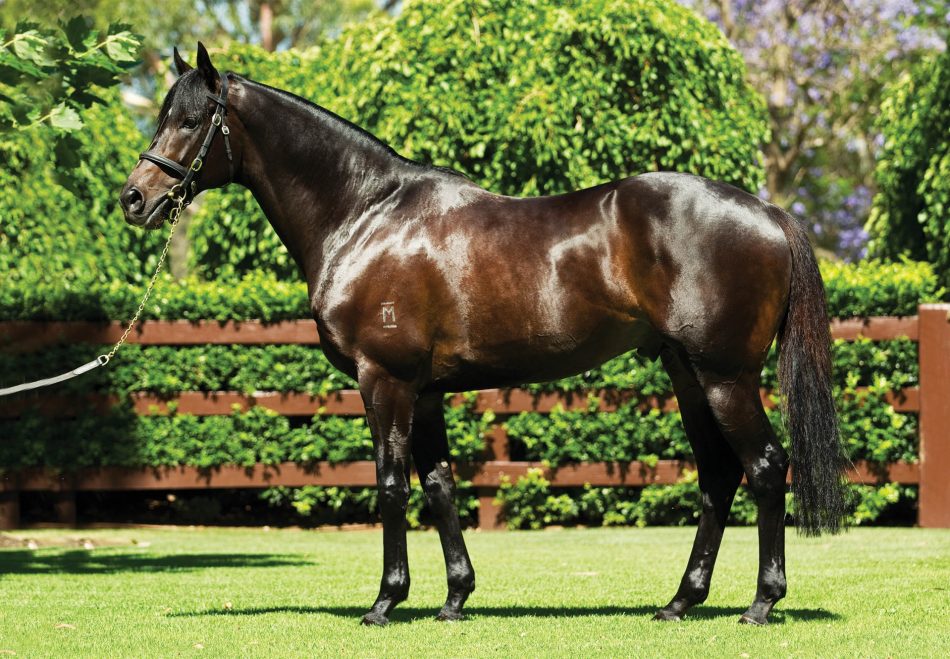
SO YOU THINK - Sire
Coolmore Stud's Colm Santry was interviewed by Kit Gow of The Thoroughbred Report who points out what he believes to be a fatal flaw in Australian racing that is suppressing the impact of middle-distance horses on the future of our industry.
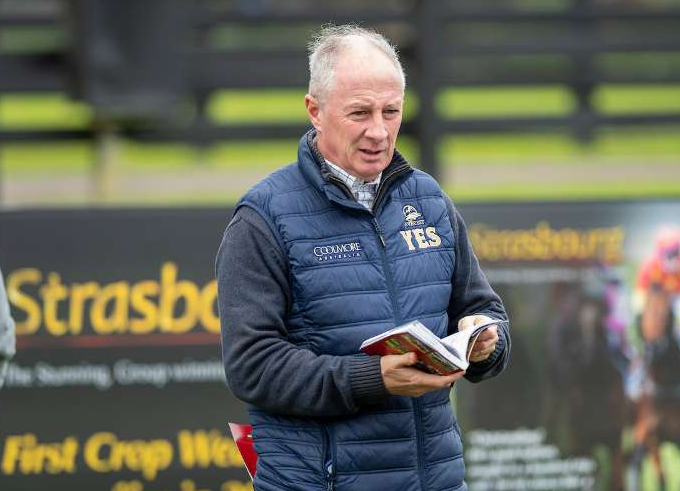
COLM SANTRY
The time is ripe to examine why SO YOU THINK is not regarded as highly as his achievements prove he should?
At first look, you may think that label a little absurd, but the fact is there are not be many stallions out there with over 60 stakes winners that have yet to crack through a six-figure service fee.
At his zenith, SO YOU THINK, the son of High Chaparral (Ire) commanded $99,000 inc GST in 2023 - a worthy reward after three racing seasons of cracking double digits in individual stakes winners - and he has never covered a book smaller than 100 mares to date, but this 2025 breeding season his fee dips to an enticing $44,000 inc GST.
Sweeping cuts to service fees to the majority of stallions have been made nationwide in response to increasing economic pressures and a dwindling foal crop, but few have more than halved in this same time span.
Fewer still continue to churn out the same level of results; a week after siring the G1 Queensland Derby winner You Wahng, So You Think picked up stakes winner number 63 with the undefeated Opportunistic, and he sired four winners last Thursday, all on provincial tracks.
Coolmore Stud’s Colm Santry said, “He’s a super horse, and he’s doing it every week.”
“Rarely a Saturday goes by where he doesn’t have a winner in Sydney and Melbourne. He’s at a very realistic fee for both commercial and owner-breeders, he has a very good sales average, and his yearlings have sold for up to $1.15 million.”
So You Think finished the yearling sales season batting with a $146,928 average - $35,000 below his peak average in the 2023 sales period - and indeed sold his first million dollar filly this year when his daughter out of G1 VRC Oaks winner Personal (Fastnet Rock) sold at the Inglis Australian Easter Yearling Sale. He’s also had a colt in both 2020 and 2021 break the million-dollar barrier as well.
With average earnings of $125,000 per progeny to race, and nine (9) stakes winners this season alone, it seems bizarre that, So You Think is set for such a Service Fee decrease.
His 2024 book of mares was his smallest to date. Why?
Santry said “He’s a horse that should be fiercely popular, but unfortunately, people now don’t want to pay to wait for these types of horses to mature anymore.”
For Santry, the problem starts with the programming.
“There needs to be more seven-furlong (1400m) races, plus racing for 2-year-olds, especially this time of year, and we probably need to increase the prizemoney in this area,” he expanded.
While we still produce Derby horses, there is no program in place early to maximise the number of horses reaching their potential at Derby distances.
“We also need to increase prizemoney for 3-year-old middle distance racing in the spring. Right now, there is a huge volume of money leaving our shores every year to buy middle-distance horses in Europe, and they (Australian Trainers) don't want to buy middle-distance bred horses in Australia. It's a huge problem.”
According to the Racing Australia Fact Book, 11,578 thoroughbreds have been imported into Australia over the past 5 seasons since the beginning of the 2020/21 racing season, while 5,076 have been exported out of the country.
Peak horse movement was in the 2022/23 season, but last year 2,290 horses still were imported in.
This isn’t broken down into which horses are to breed and which to race, however it can be extrapolated that, in this time period, two horses are being brought into the country for every horse that leaves.
At the same time, the Australian foal crop is shrinking; successful pregnancy rates have remained steady at 65 per cent for the last five seasons, but the 2024 foal crop is currently reported as 11,572, a drop of nearly 1,000 foals from the previous season and over 1,300 from the 2020 season.
This racing season has seen a significant drop in juveniles making it to the races; at the time of writing, only 1,760 juveniles have started in races on Australian shores this season, compared to a total of 2,250 at the end of the 2023/24 season, meaning just under 500 must have their first starts in the next six weeks to match last season.
“A tiny percentage of the juvenile foal crop are racing at the moment,” Santry said.
“There has been some very average 2-year-old racing at the moment. We should be more focused on later 2-year-olds and getting them to the races, and then, on our 3-year-old racing, because there’s millions and millions being spent on bringing in horses to race here who are four, five, and six-year-olds. We need to try and claw some of that back.”
Santry acknowledged, production costs are on the increase, and that has to be accounted for somewhere. But importing a horse from the Northern Hemisphere is not cheap either; transportation costs and documentation can run into the six figures. The more of this that can be spent within our borders, the better, is his feeling.
“We need more 2-year-old races over distance, and we need to put more money into races like the Derby in Melbourne and the Champion Stakes in Sydney, they ought to be looked at. We should try to encourage breeders to breed more of these types of horses, and then by doing that, we'll encourage more buyers to buy these types of horses.
“Our whole breeding industry revolves around the Golden Slipper,” Santry said.
“It revolves around five and six-furlong races for 2-year-olds in the autumn. It's very much focused on that, so if you have a 2-year-old that can't win over five or six furlongs in Australia, generally speaking, you might as well turn them out and not race them.”
In contrast, juvenile racing in Europe is much more varied in distance. Last year, Britain and Ireland recorded just over 13,000 foals between them, and there is much more on offer as the racing season progresses.
Santry stated “There could be seven or eight 2-year-old races in Ireland and England on any day. There’s races every day over five, six, seven furlongs. It caters to the whole population. In Australia, we cater for 15 per cent of the foal population. That’s all. We're set now for probably the lowest foal population of 2-year-olds to race ever.”
Improving the breed
Santry believes that the only way the Australian thoroughbred can continue to evolve and improve is by the promotion of longer races for juveniles and thus, the inclusion of middle-distance horses in the breeding pool.
“Olly Tait’s father Sandy, a great breeder, said to me years ago that you have got to keep introducing these great horses all the time to keep improving the breed,” Santry said.
“At Coolmore we’re not afraid of bringing these seven-furlong 2 and 3-year-olds out here, they may not be the most exciting stallions in Australia, but when their daughters go to stud, they’re important for the breed to survive.”
Exciting shuttler City Of Troy (USA) (Justify) is perhaps the most recent example of this line of thinking; all three of his juvenile wins were over 1400 metres, which including a world-leading performance in the G1 Dewhurst Stakes at Newmarket that aided him in earning his European Champion 2YO Colt title. He added a further three topflight wins as a 3-year-old in 2024, all over no less than 2000 metres, to secure another championship and his reception down under has been extraordinary already.
“The horse is full,” Santry confirmed.
“We feel he's going to be a very important horse going forward. European Champion 2-year-old and 3-year-old, and very well bred. He's going to complement the breed here.
“When we breed his daughters back to domestic speed horses like Switzerland and Shinzo, you’re likely to breed a very good horse.
“Fusaichi Pegasus is a good example of that, as a broodmare sire he has a Golden Slipper winner, a Blue Diamond winner, and a Magic Millions winner all in the same crop.”
Newgate Farm resident Capitalist, G1 Golden Slipper Stakes and Magic Millions winner, and G1 Blue Diamond Stakes winner Catchy (Fastnet Rock) both boast the former shuttler as broodmare sire.
“He (Fusaichi Pegasus) was deemed to be an unsuccessful stallion in this country. But it's what they leave here. They leave all these daughters of these champion racehorses, and they turn out to be very good broodmares, which everybody tends to forget. It's just another feather in their cap.”
“The most successful stallions in the world will fail in Australia. If you brought Sadler’s Wells, Galileo, and Frankel down here, they’d all be deemed unsuccessful stallions because they just wouldn’t get the sprinters.”
Sireline of the future
Santry sees the same fate for So You Think, who has already begun to make a significant mark as a broodmare sire; doomed not to be respected as heavily in Australia, as his best horses need more ground.
His daughters have produced Golden Slipper star Fireburn (Rebel Dane), million dollar earner Rivellino (Too Darn Hot {GB}), G1 Australian Derby runner-up Firm Agreement (Yes Yes Yes), and G1 Prix Jean Prat winner Punchline (Fr) (Starspangledbanner) among 121 winners.
“He was a very successful racehorse. I used to ride for Bart Cummings, and he told me he could have won the Newmarket down the Flemington straight with him. He gets the odd horse like that - he’s won an Everest. It’s possible. The High Chaparral sireline is shooting the lights out currently. It’s the sireline of the future.”
That was something that the Australian breeding industry could not foresee in 2005.
“In his early years, he was deemed an undesirable stallion in Australia,” Santry said.
“We originally discussed him for Australia, but we didn’t get enough support, so he went to New Zealand.
“They’re good breeders, the Kiwis, they want to breed to a high class 3-year-old, and they'll back up into them. They will go to him in his second, third and fourth seasons, where Australians prefer to go to these unproven horses in their first year, every year.”
New Zealanders are reaping the returns now of investing in Super Seth, grandson of High Chaparral, who has produced four Group 1 winners this season alone - three of which are from his first crop of foals.
The faith is also being repaid in those who have invested in Dundeel’s (NZ) greatest Australian-based son, Castelvecchio, who knocked the G1 Australian Derby out of the park with his daughter Aeliana (NZ).
The fear of failure is at an all-time high in the industry - and it is an easy observation that book sizes are typically maximal in a stallion’s first season, and then decline until his first runners prove him worthy of return.
“There’s trends there,” Santry can foresee a further narrowing of the breeding market, should the current status quo of race programming continue.
“First season sires are covering more mares and the book sizes of the leading stallions continue to grow, but the foal crop continues to decline. The breed to race model has declined massively. It's been probably one of the greatest tragedies in the breeding industry in the last 10 years in Australia. Small breeders have just dropped off the planet, and people are not in semi to good proven stallions anymore. They’d rather go to an unproven one.”
Dynamic Syndications Team agrees with many of Santry’s opinions.
We always target this style of proven sire, or champion racehorse young sire, capable of producing earlier running middle-distance athletes, because the numbers in the foal crop are small. This equates to less competition. International tried horses over middle-distance can’t compete here until they are 4yo’s, so buying well-bred, well-conformed yearlings that are have deep pedigrees to run a mile and further, offer tremendous earning potential, especially in their classic 3yo season and even more so, the yearlings bred in NSW eligible for BOBS Bonuses.
In 2025 Team Dynamic purchased yearlings by Sires such as: SO YOU THINK (Coolmore), ST MARK’S BASILICA (Coolmore), PALACE PIER (Darley), ADMIRE MARS (Arrowfield), to attack such racing.
SO YOU THINK x SULTAH Colt
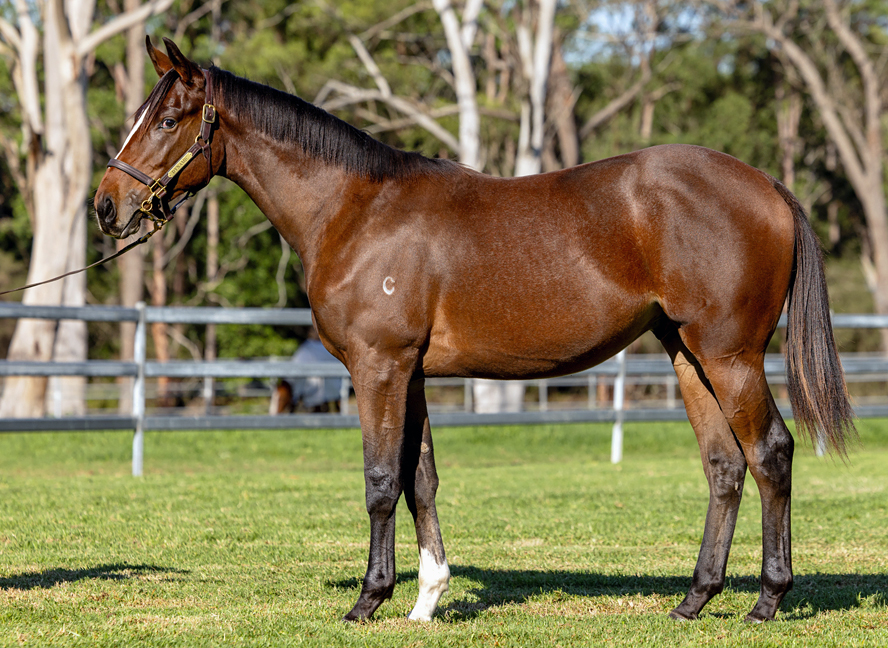
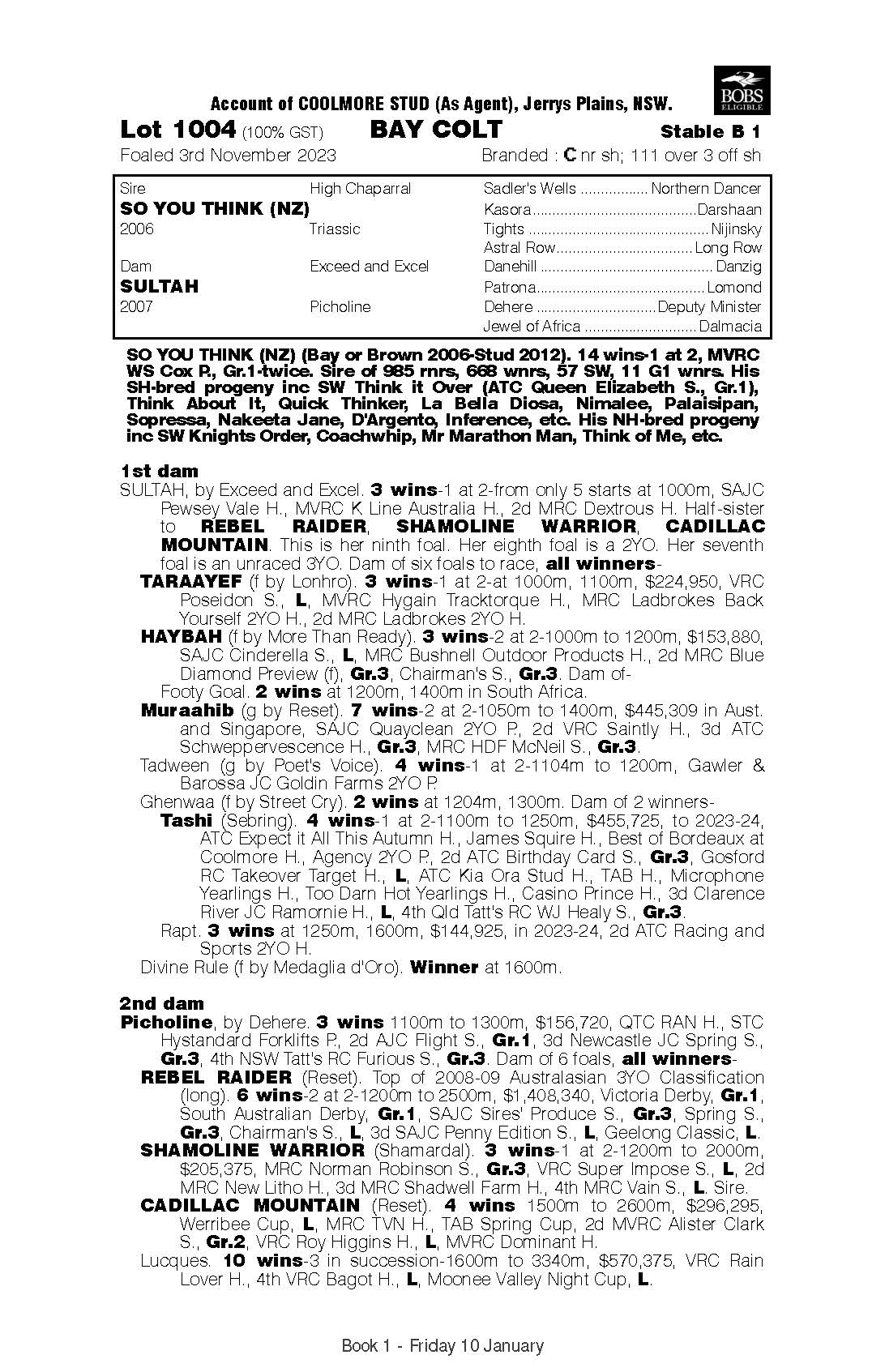
ST MARK'S BASILICA x PICKIN' TIME Filly
%20x%20Pickin%20Time%20WEB%20PIC.jpg)
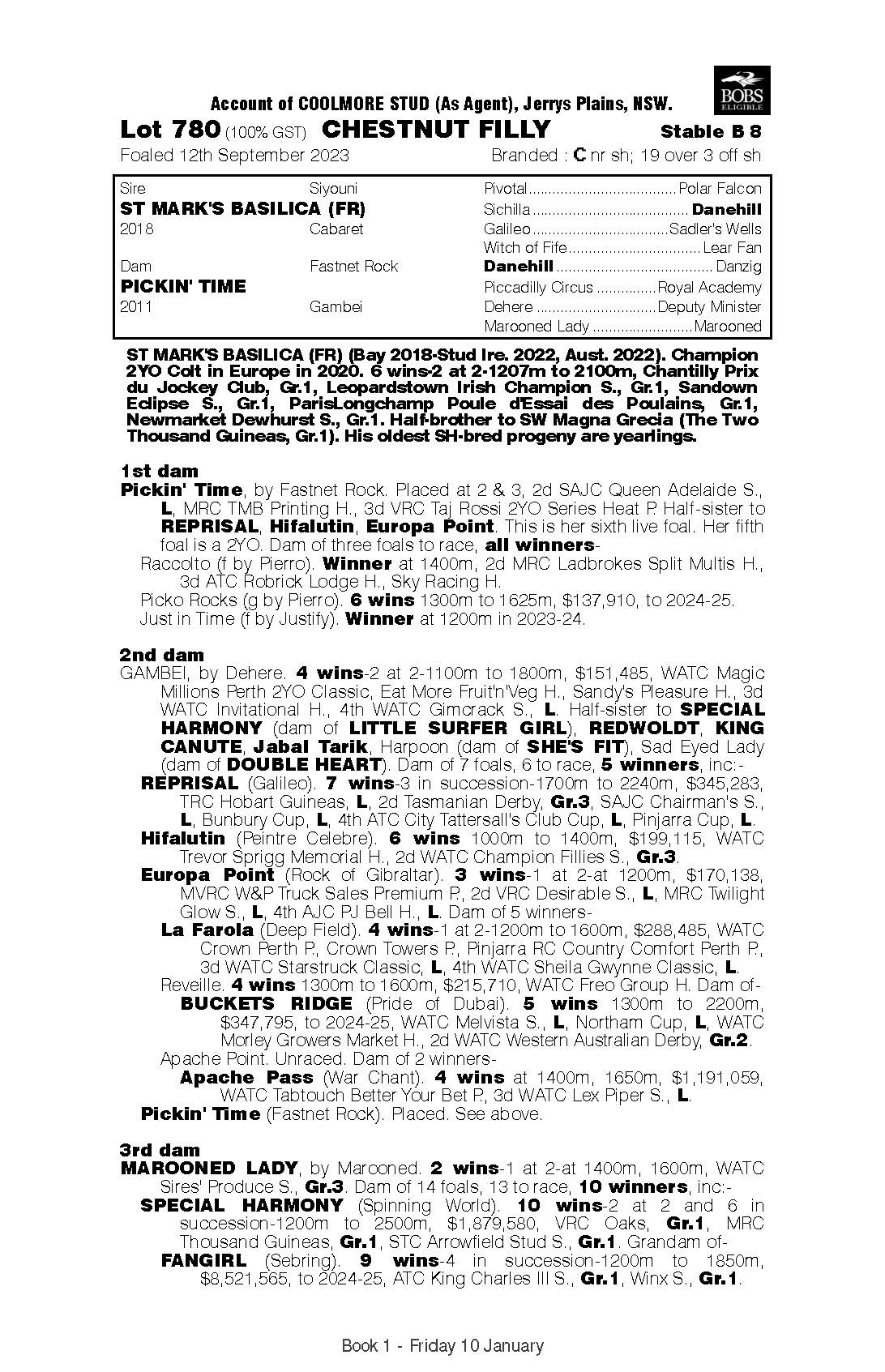
PALACE PIER x YOU'RE SO GOOD Colt
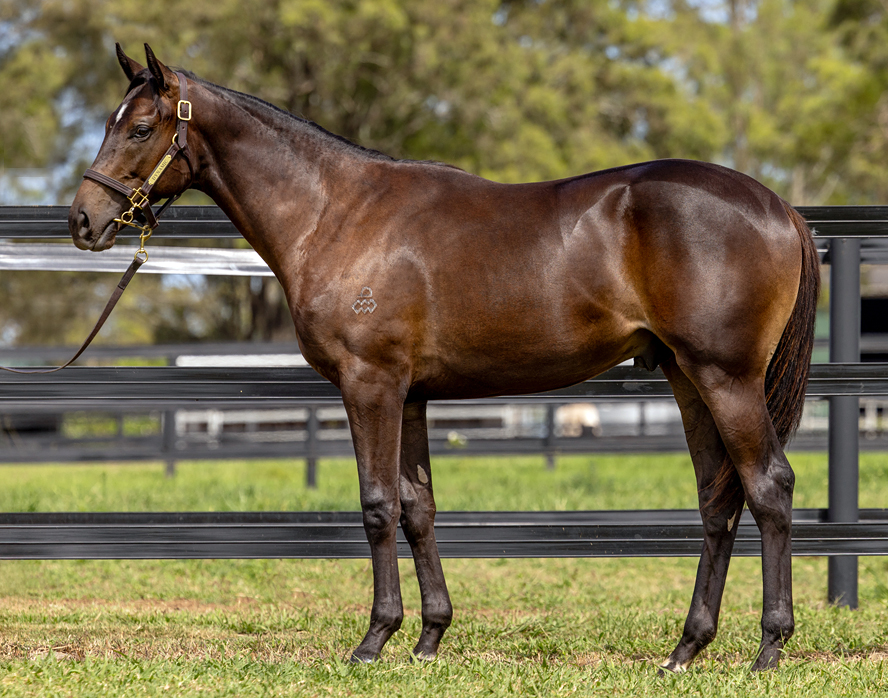
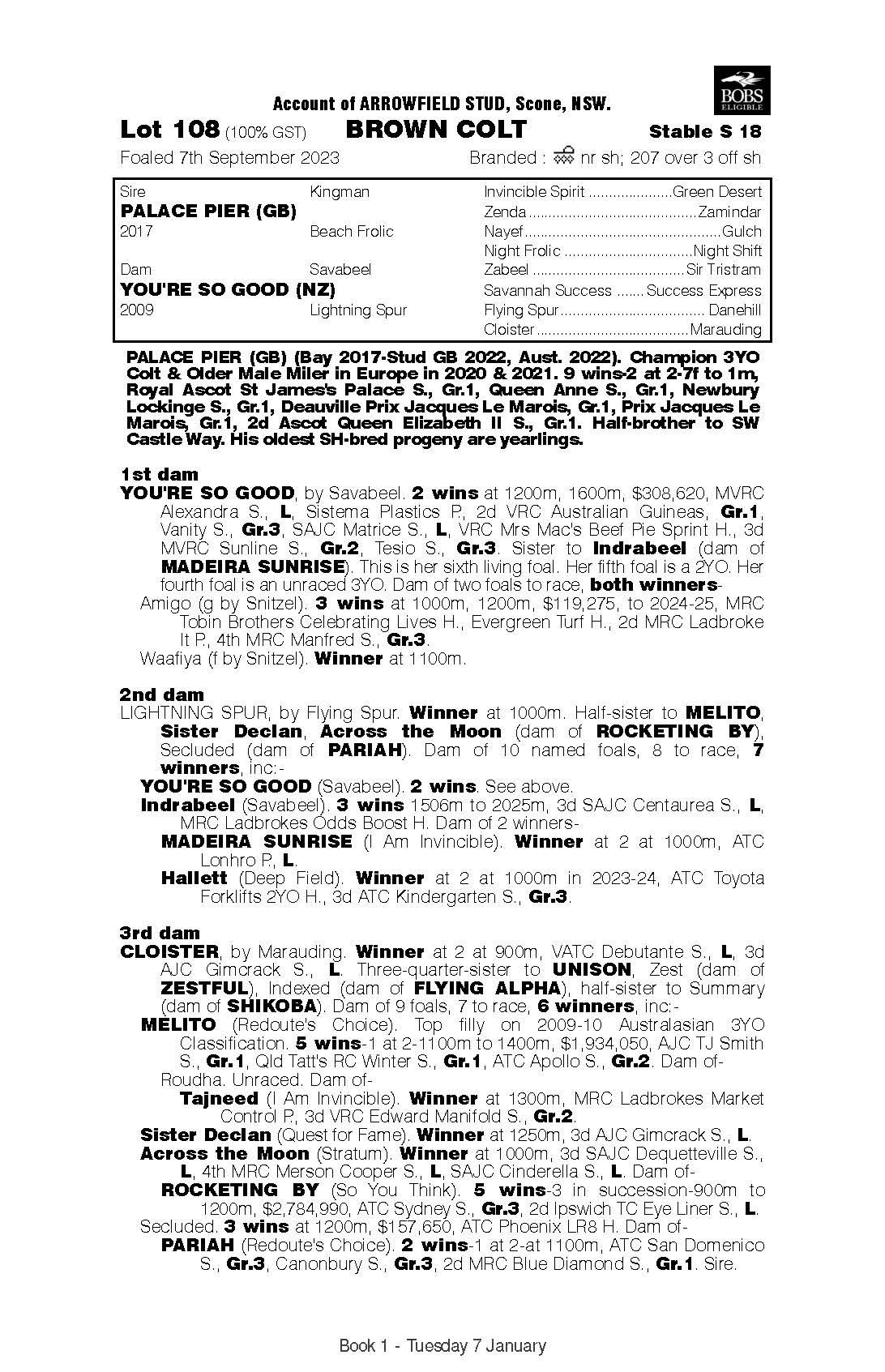
ADMIRE MARS x BANKSIA Colt
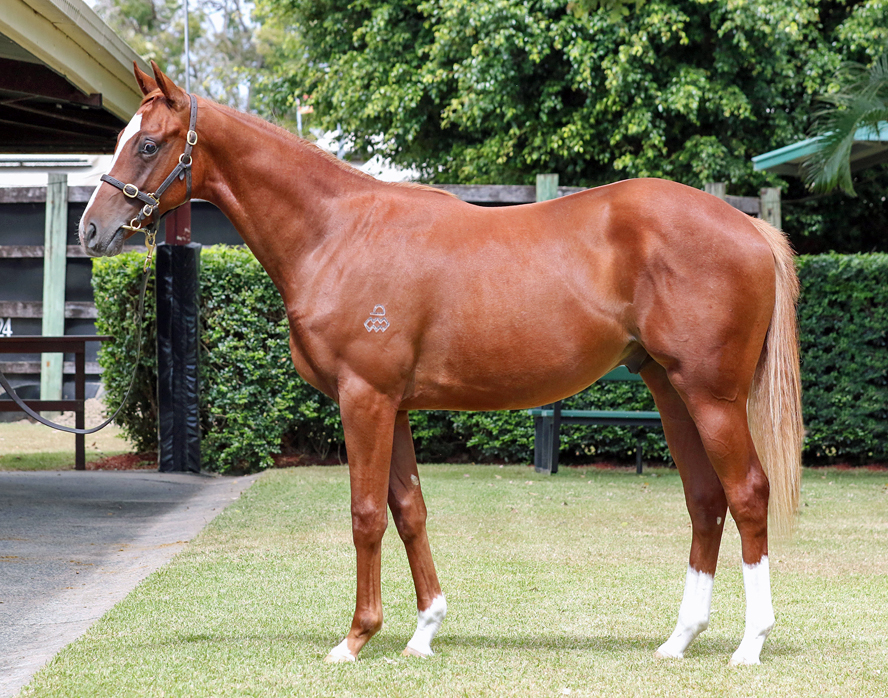
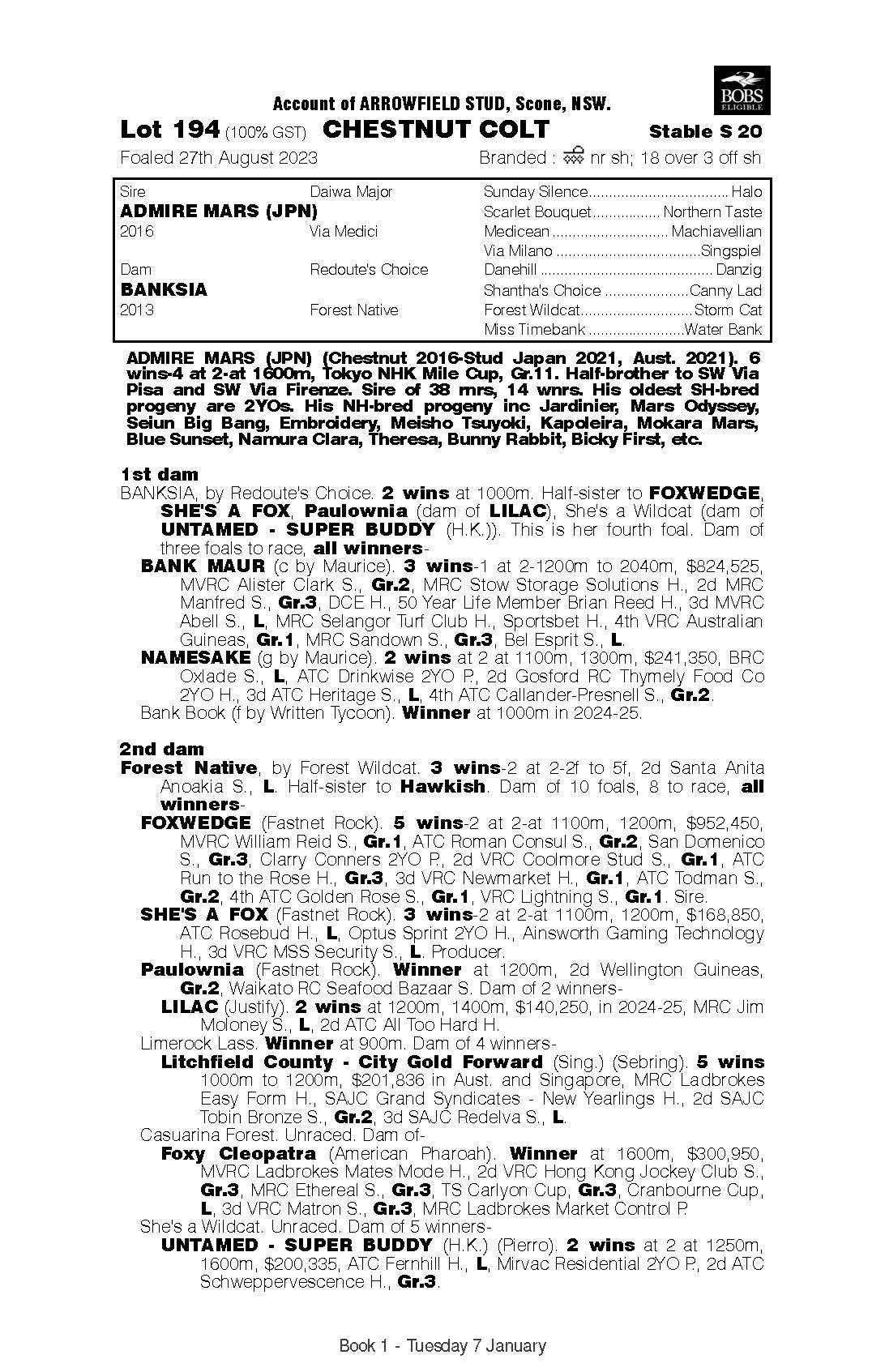
Our job to identify opportunities on commerciality and genetics, where others just follow fashion trends. We spread our purchases to do various distances of racing.
No point having all speedy squibs, they will only race against one another in capacity size fields, and then we would not have any representatives running over further ground as later maturing horses. Therefore, we would be missing out on the lucrative prizemoney on offer in those races where the field sizes are always small and earning opportunities increased.
The trick here is patience. In most circumstances, patience is well rewarded in racing.